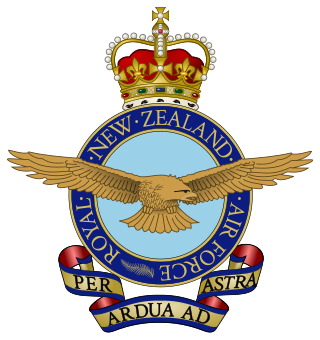
The Royal New Zealand Air Force is the aerial service branch of the New Zealand Defence Force. It was formed initially in 1923 as a branch of the New Zealand Army, being known as the New Zealand Permanent Air Force, becoming an independent air force on 1 April 1937.
Air marshal is an air-officer rank used by some air forces, with origins from the Royal Air Force. The rank is used by the air forces of many countries which have historical British influence, including many Commonwealth nations. The rank is usually equivalent to a vice admiral or a lieutenant general.

No. 40 Squadron RNZAF is a transport squadron in the Royal New Zealand Air Force (RNZAF). Established in June 1943, it remains on active duty.
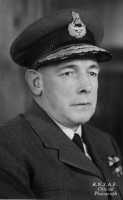
Air Vice Marshal Sir Leonard Monk Isitt was a New Zealand military aviator and senior air force commander. In 1943 he became the first New Zealander to serve as the Chief of the Air Staff of the Royal New Zealand Air Force, a post he held until 1946. At the close of World War II, Isitt was the New Zealand signatory to the Japanese Instrument of Surrender. After the war, following retirement from the Air Force, he worked as chairman of Tasman Empire Airways.

Air Chief Marshal Sir Ralph Alexander Cochrane, was a British aviator and Royal Air Force officer, perhaps best known for his role in Operation Chastise, the famous "Dambusters" raid.

Hamilton Boys' High School is a boys' secondary school in Hamilton, New Zealand and is the largest secondary school in the Waikato region. The school was established as Hamilton High School in 1911 but was later split into separate boys' and girls' schools, with the current school opened in February 1955. Its sister school is Hamilton Girls' High School. The school crest features a lion, sash and star, and bears the motto "Sapiens Fortunam Fingit Sibi" which translates to "a wise man carves his own fortune". The school colours are black and red.

Te Rapa is a mixed light industrial, large-scale retail and semi-rural suburb to the northwest of central Hamilton, New Zealand that is built on a flat area that was previously the bed of an ancient river, the forerunner to the present Waikato River.
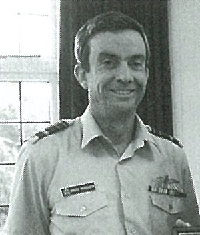
Air Marshal Sir Bruce Reid Ferguson, is a retired Royal New Zealand Air Force officer who served as Chief of the New Zealand Defence Force and Director of the Government Communications Security Bureau. He took up the appointment when the previous director, Warren Tucker, was appointed as Director of the Security Intelligence Service on 1 November 2006. Ferguson's term of appointment was for four years, stepping down from the role in 2011. Following his retirement, in July 2012, he was appointed as a Justice of the Peace for New Zealand.

Air Vice Marshal Sir Arthur de Terrotte Nevill, was a New Zealand military aviator and administrator.

Roger Patrick Blundell Drayton was a New Zealand politician of the Labour Party.

Air Vice Marshal Peter James Stockwell, is a retired senior Royal New Zealand Air Force (RNZAF) commander and former Chief of Air Force.
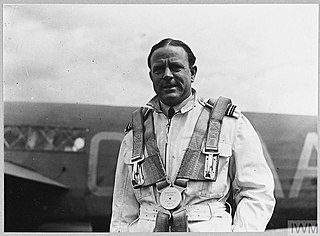
Air Vice-Marshal Cyril Eyton Kay,, known as Cyrus Kay, was a New Zealand aviator and military leader. Born in Auckland, Kay joined the Royal Air Force in 1926 for a five-year period of service, during which he attempted to break the record for the fastest flight from England to Australia. He remained in aviation in civilian life and was a participant in the MacRobertson Air Race of 1934.
Chief of Air Force (CAF) is the most senior appointment in the Royal New Zealand Air Force, responsible to the Chief of Defence Force. The post was originally known as the Chief of the Air Staff.
Air Marshal Sir David Ewan Jamieson, was a senior commander in the Royal New Zealand Air Force. He was Chief of the Air Staff from 1979 to 1983, and Chief of the Defence Staff from 1983 to 1986.
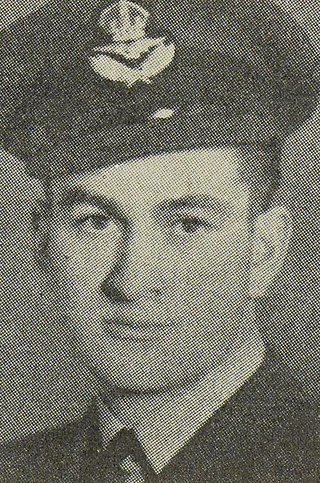
Air Vice Marshal Cyril Laurence Siegert, was an air officer of the Royal New Zealand Air Force, who served as a bomber pilot during the Second World War and rose to be Chief of the Air Staff, the most senior appointment in the RNZAF, from 1976 to 1979.
The 2008 New Year Honours in New Zealand were appointments by Elizabeth II in her right as Queen of New Zealand, on the advice of the New Zealand government, to various orders and honours to reward and highlight good works by New Zealanders, and to celebrate the passing of 2007 and the beginning of 2008. They were announced on 31 December 2007.
Air Vice-Marshal Cameron Archer Turner, was a senior Royal New Zealand Air Force (RNZAF) officer, who served as Chief of Air Staff from 1966 to 1969.

Air Vice-Marshal Ian Gordon Morrison, was a New Zealand aviator and military leader. Born in Hanmer Springs, he briefly served in the Royal Air Force before transferring to the Royal New Zealand Air Force in 1939. During the early stages of the Second World War, he was a bomber pilot with No. 75 Squadron, which was formed mostly with New Zealand personnel and operated Vickers Wellingtons. He returned to New Zealand in 1940 for instructing duties and then was a staff officer with the RNZAF's No. 1 Islands Group, based in Vanuatu. He later commanded No. 3 Squadron during the Solomons campaign. After the war, he held a series of staff posts before becoming Chief of Air Staff of the RNZAF in 1962. In this capacity he replaced much of the air force's dated equipment and sought to improve its strike capacity. Appointed a Companion of the Order of the Bath in 1965, he retired the following year. He died in 1997, aged 83.
Air Vice Marshal William Hector Stratton, was a New Zealand aviator and military leader during the Second World War and the postwar period.
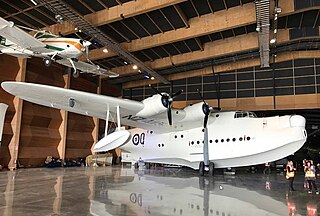
Developed as a long range maritime reconnaissance flying boat, the Short Sunderland was widely used during the Second World War. New Zealand purchased four Sunderlands in early 1944 for use as transport aircraft but did not receive them until the end of that year. They were operated by the Flying Boat Transport Flight of the Royal New Zealand Air Force (RNZAF) from February 1945, carrying cargo and repatriated New Zealand military personnel from the South Pacific back to New Zealand. They soon began carrying paying passengers and in late 1947 the Sunderlands were transferred to the New Zealand National Airways Corporation.














